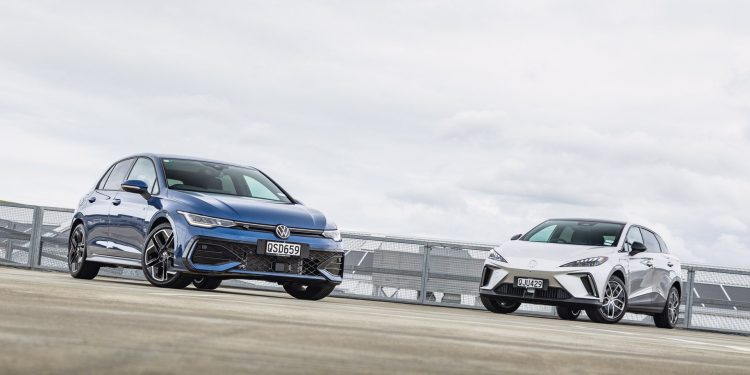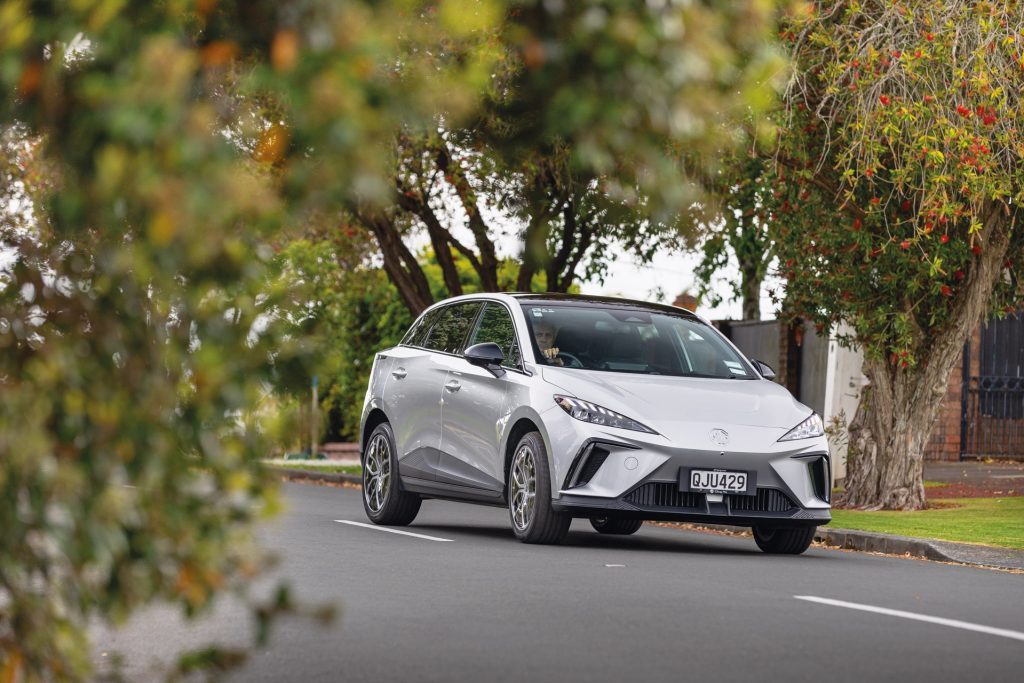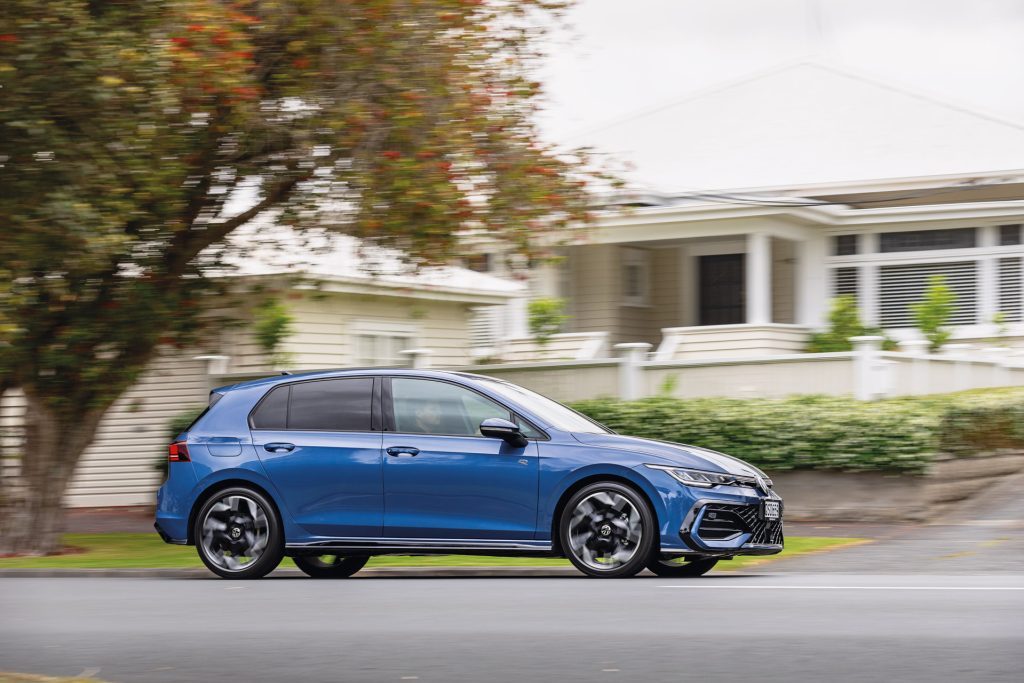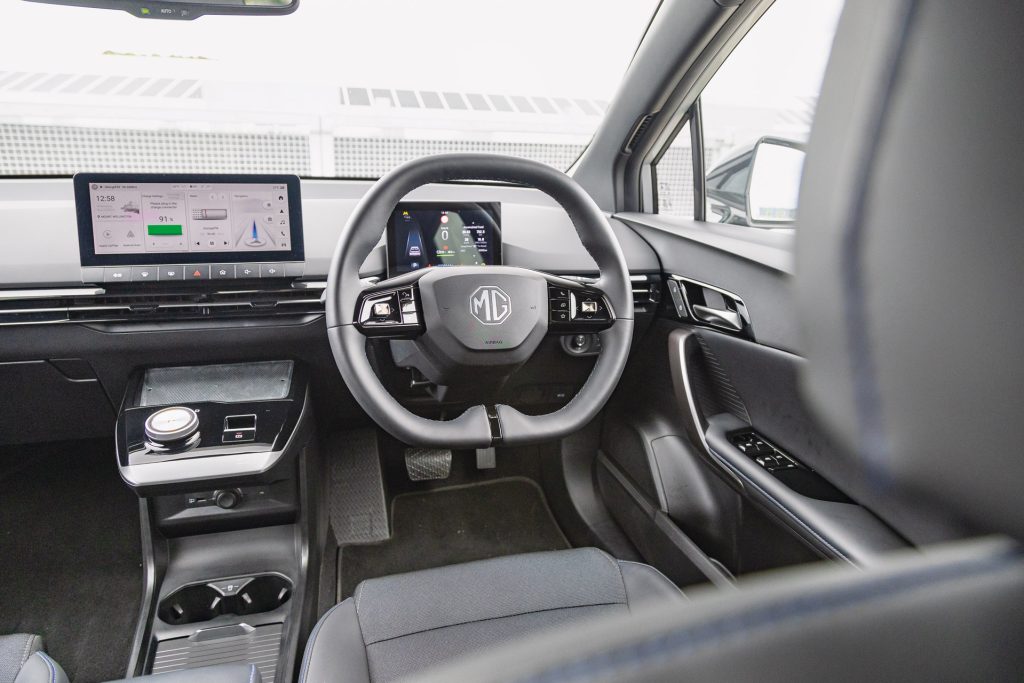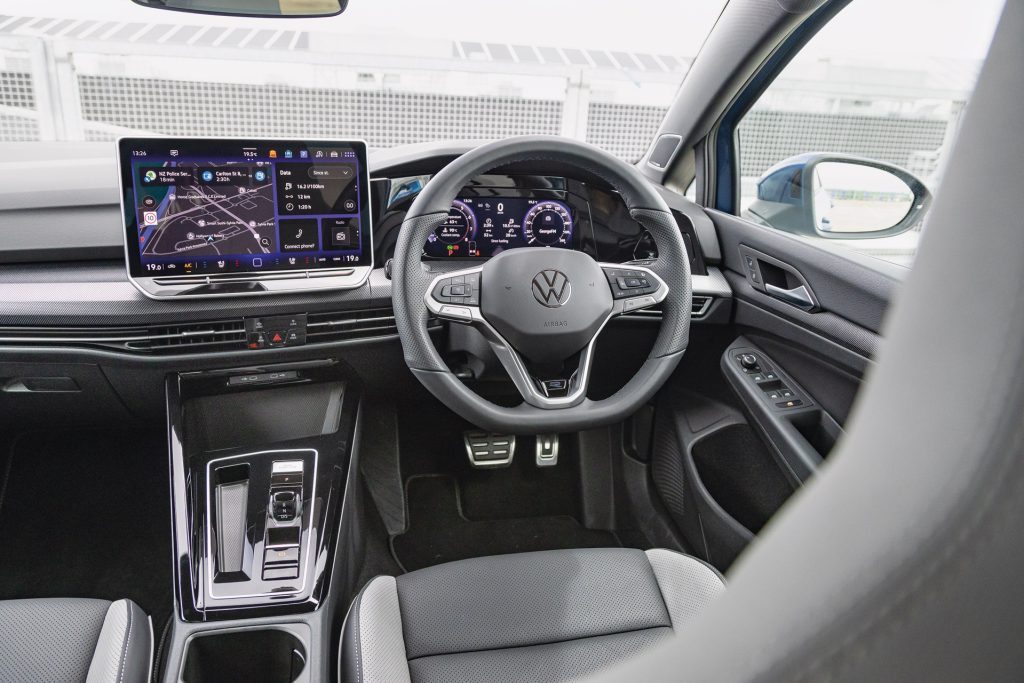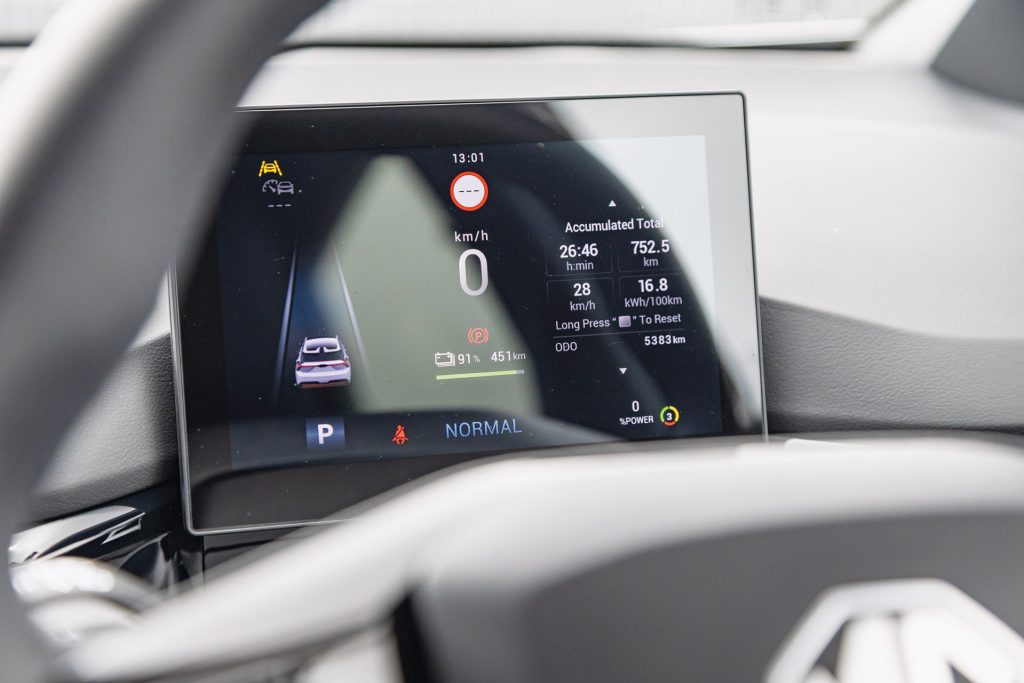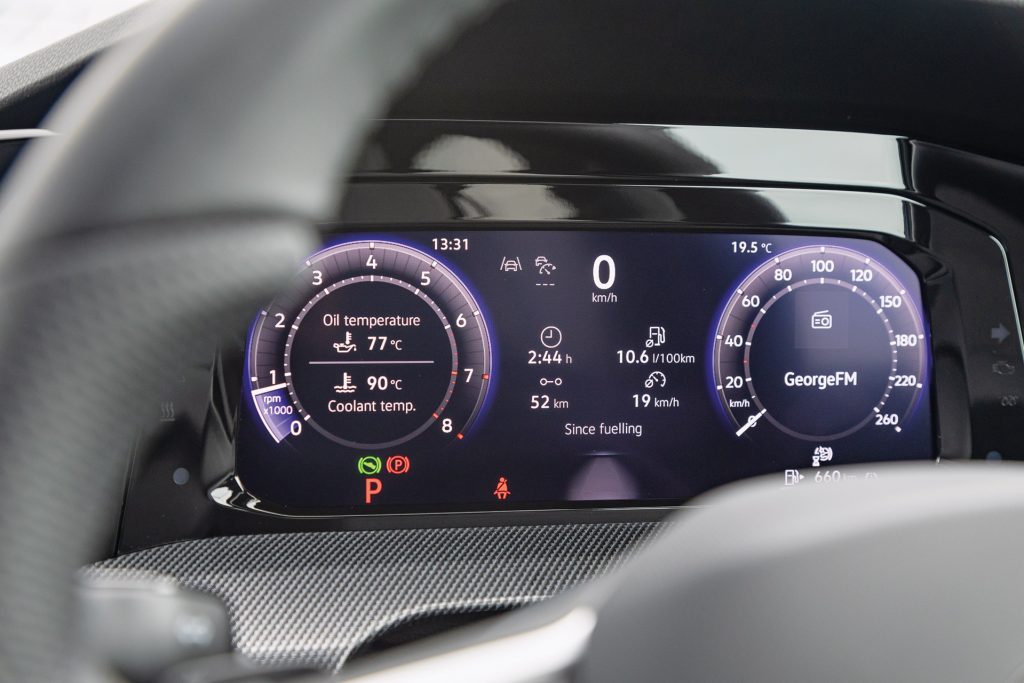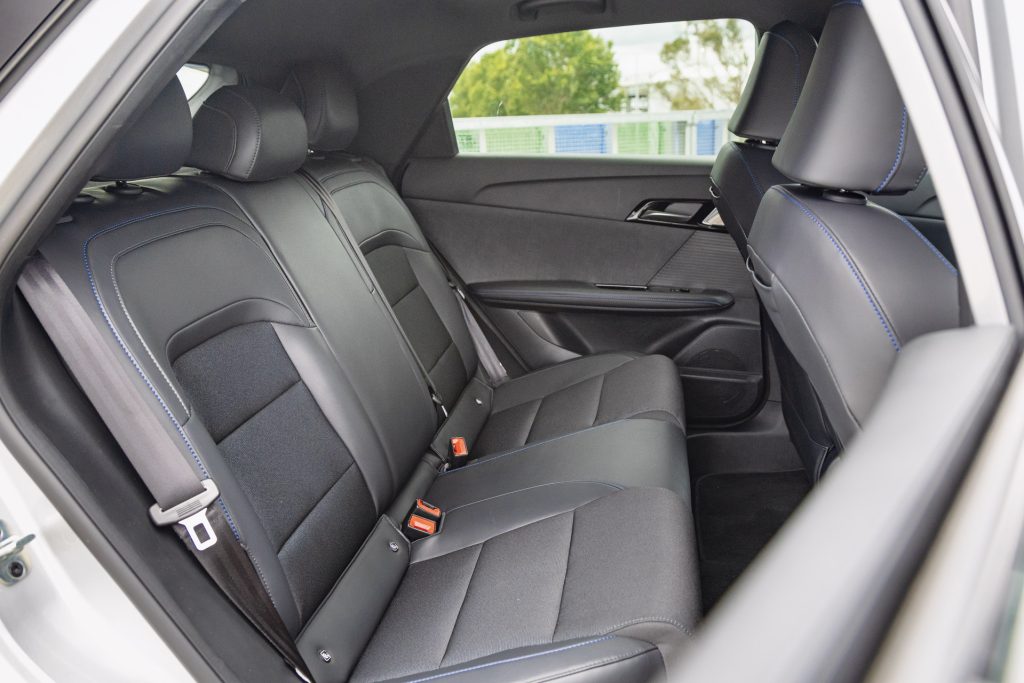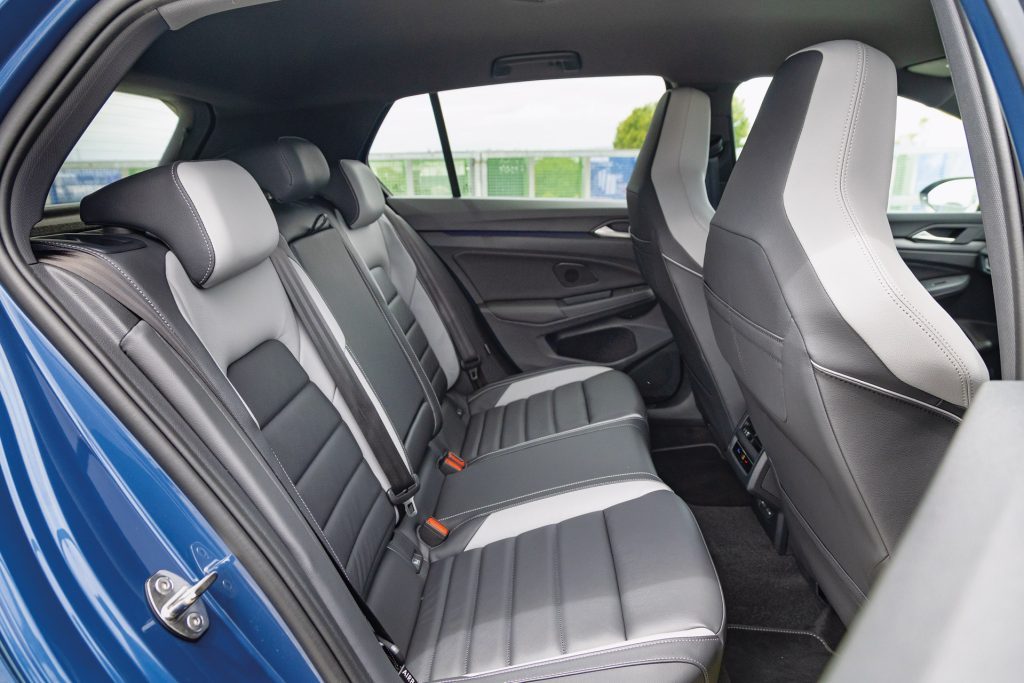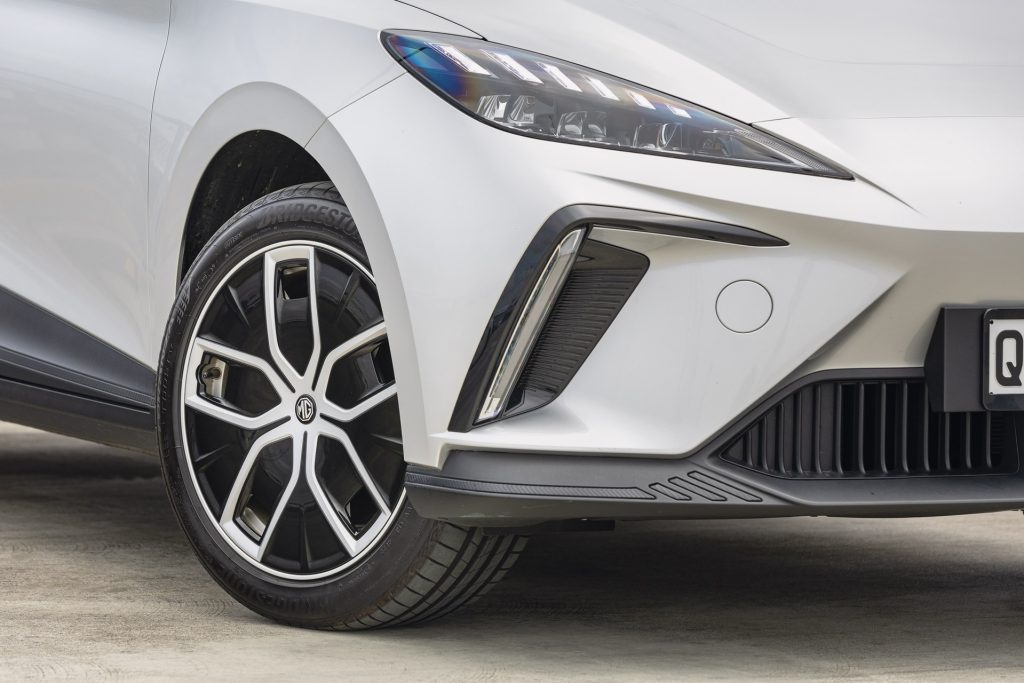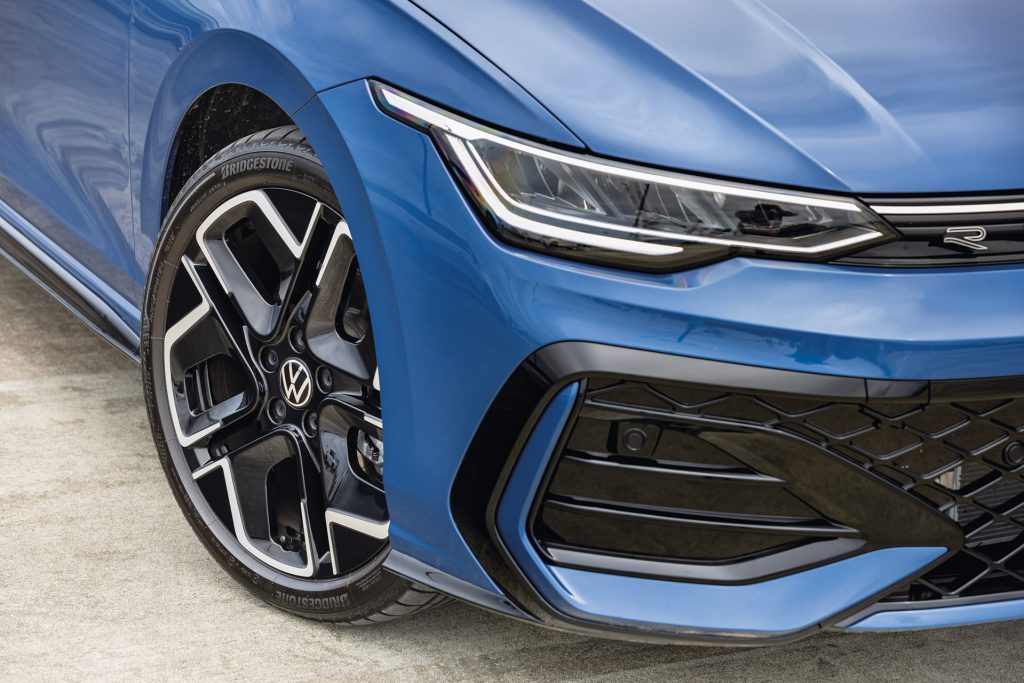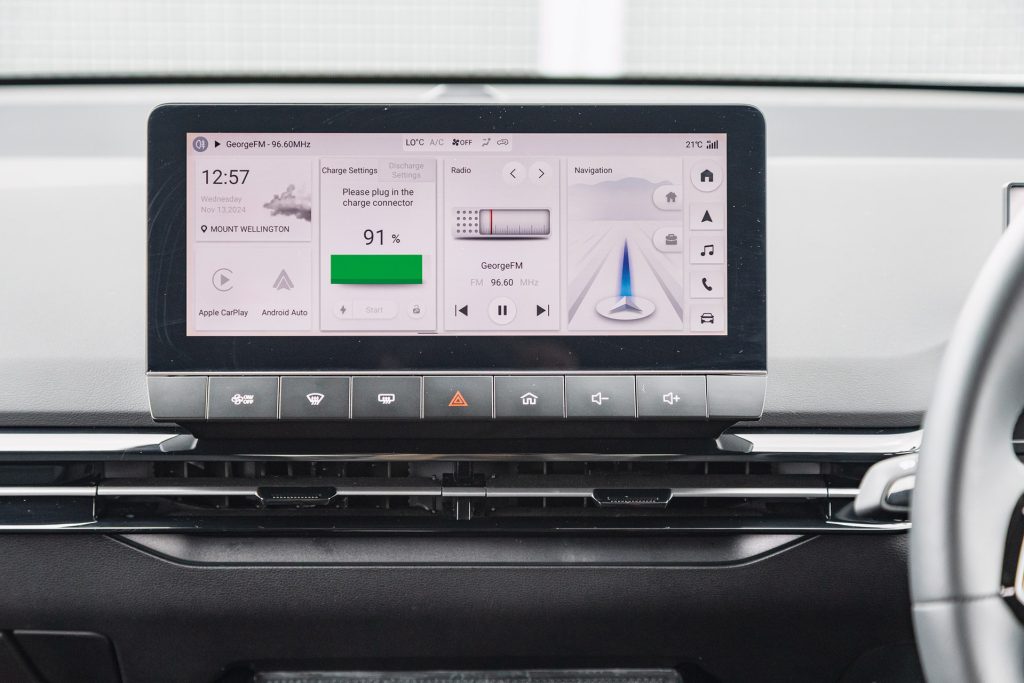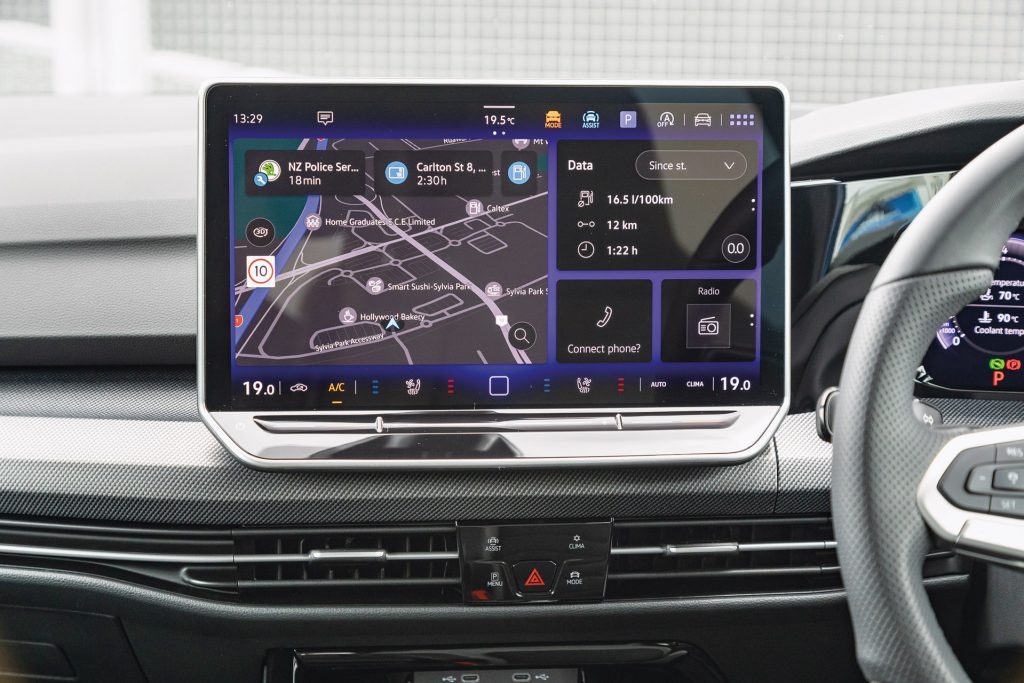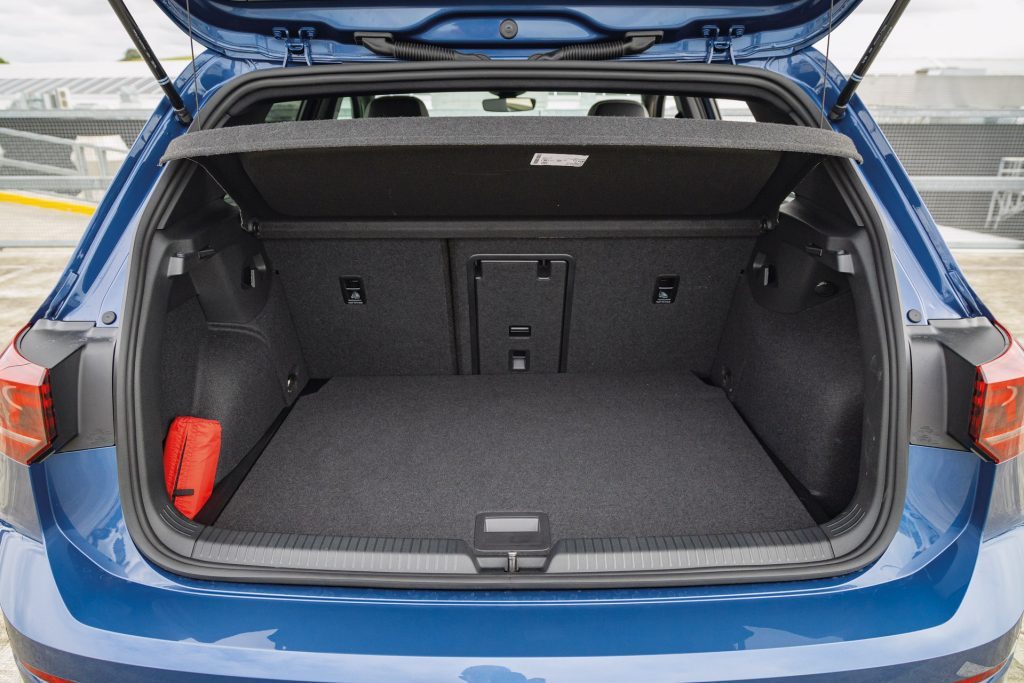2024 MG4 Essence 64 vs VW Golf R-Line Comparison
Words: Kyle Cassidy | Photos: Isaac Western
Could 2025 be the year to switch to electric? For some that’ll be a flat no, the EV topic almost as triggering as a haka in the debating chamber. For those with a more balanced outlook and the need for a new car, the difference in price between an EV and an ICE device is now negligible in some areas of the market. We compare combustion with battery power in this MG4 versus VW Golf match up.
With a new VW Golf out, current owners will be pondering whether it’s time to upgrade, and maybe even thinking about an electric alternative. There’s the ID.4, which isn’t too much more expensive but nor is it a compact hatch. There’s the GTE plug-in hybrid, but there’s no all-electric Golf. Not yet anyway.
The new (or heavily revised at least) VW Golf kicks off at $44,990 for the Life, while this R-Line (think Life mechanicals in active wear) is $50,990.
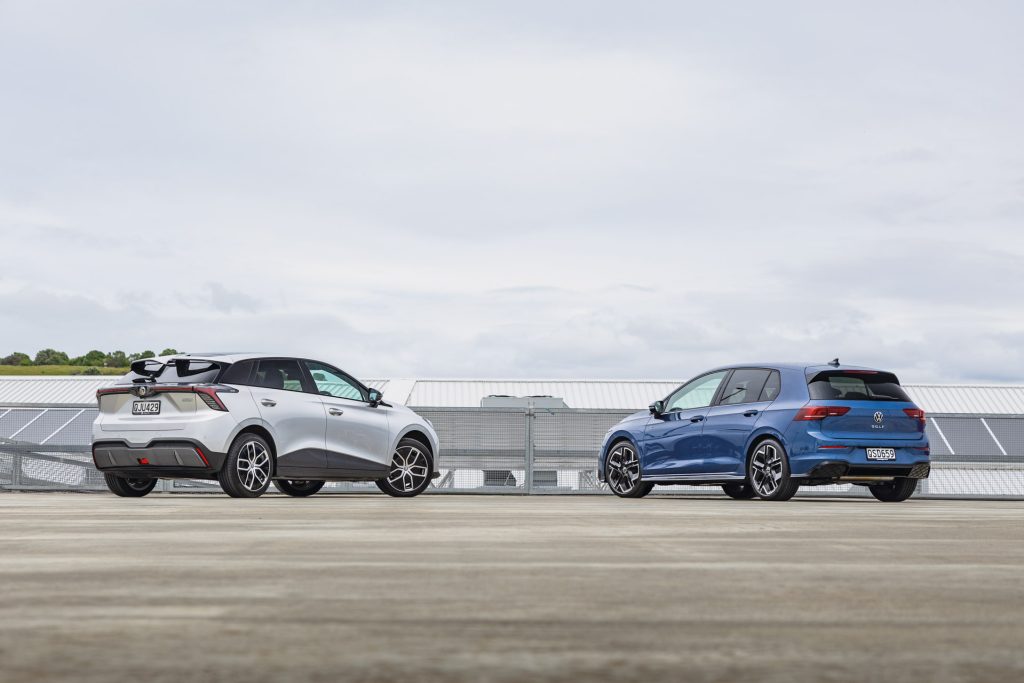
An electric hatch that is similar in size and cost is the MG4. It’s probably not a car on the Golf buyer’s radar, but think of this as an ICE vs EV comparison.
The MG4 is all electric, the range starting from $43k, while the Essence 64, with a specification and power output similar to the VW Golf is $52,990 so not too dissimilar then. We had hoped for a 64 for this comparison, but could only borrow the more expensive Long Range MG4 which has a bigger battery and a more powerful motor, but the same Essence spec.
Same but very different
Both are five-door hatchbacks but one is from the new energy camp; the other sticks to the legacy model. The NZ-spec Golf is without any form of electrification, which is becoming rare. Styling sets the tone; the VW Golf conservative as usual, the MG4 more edgy.
Inside, the MG4 has more of a ‘value’ feel about it, with an abundance of hard plastics. There are just enough softer surfaces but it can’t match the VW on build quality. The Golf manages more of a premium vibe with its finishings. The new infotainment screen is larger and brighter, though still not quite as intuitive as it could be. At least it seems to be quicker than the old interface. It’s superior to the MG4’s set-up too, its layout clumsy, graphics dated and sensitivity lacking. A round steering wheel like the Golf’s is always preferable. The MG4’s is just plain odd, and the VW now has proper buttons on the spoke, haptics done with.
There are some advantages to the EV platform; the driving position is more spacious, there’s more storage and better outward vision from the slightly higher seating position. The VW Golf’s gear selector is easy to use, and clumped together with the start button and parking brake. A start button is something the MG doesn’t have; it’s on and ready when you climb aboard.
Electric car packaging is supposed to yield them more interior space, but is that the case here? Definitely. The MG4 has larger rear doors for easier entry and superior legroom in the back. And with a flat floor, it’s a true five seater. Space is tight in the back of the Golf, more of a 4+1 seater. Open the boot and the cargo hold is bigger in the MG4 too, being wider, if not quite as deep as you’d hope. So the electric makes more of its footprint. Both cars measure exactly 4287mm in length, while the MG4 is 47mm wider.
Emissions free or faster refills?
The Golf has a longer range when its energy store is full, with close to 650km from its tank of premium gas. Its long term fuel use average was 8.1L/100km, which isn’t all that great for a compact hatch in the time of hybrids, both mild and full. You get at best 500km from the MG4 Long Range whereas the 64 model will give you between 350-380km before it needs the plug. For efficiency expect around 16kWh/100km in the MG4.
Yes, the MG takes a lot longer to replenish its stores, but it’s not so painful on the wallet, especially when charged at home. And that’s even with pesky road user charges, something all fuel types will be lumped with soon enough. If you’re still an EV sceptic, don’t worry about range, that’s not the issue. Nearly all your charging takes place at home. It’s the charging infrastructure which is the biggie, but the Government said it would sort that, remember? Guess we’ll wait for them to get the economy back on track first.
Different drives
Both cars are ‘decent drives’ but in different ways. The Golf has more intimate steering, with better weighting. This front-engined, front-driver manages to hide its weight imbalance well. It’s hard to induce understeer, smart brake nipping tightening the line to keep you locked on track. Decent rubber helps too while the combination of quality dampers and well-struck spring rates manage both ride decorum and control, especially for shockers of the non-adaptive variety.
Read more 2024 Volkswagen Golf GTI review
The MG4 is a lively character. It’s agile, turning willingly although more life from the rack would be nice. While heavier, it is better balanced. And with its motor out back, and the drive coming from the rear, this helps influence the rotation of the chassis. It is well suspended also, the ride and handling mix sorted here too. The EV has the far superior throttle response, while the ICE machine is better in the brake department, the Golf’s pedal more progressive and feelsome where the MG’s is overly sensitive and hard to modulate.
What about in the city?
The EV’s domain is urban running. That smooth, quiet, instant delivery makes the MG4 easier to drive. Especially if you get used to the one-pedal drive mode. When the traffic lights go green, the Golf’s 1.5T engine takes a moment to fire into life, engage the trans and build boost to get moving, whereas the MG just bolts. There’s no mild hybrid electric assistance to bulk up the low-end torque in the VW Golf, so it feels laboured. And it has to shuffle through the gears when you need extra go. By that time, the EV has already gone.
Both cars ride well enough in the city considering they’re a little bit sporty (the R-Line with sports suspension) while the MG4 has a superior turning circle, another benefit of its rear motor layout.
So what’ll it be?
Is the MG4 a definitive winner? Hmm, not quite. The MG4 is a good car but a few aspects prevent it from being a great one. The interior quality misses the mark for a $50k car. And it needs a round steering wheel with less infuriating multifunction buttons. The door sill is too wide hampering your exit, the centre rear headrest robs your rear view and the brake pedal action needs retuning. As do some of the active safety features, the lane keeping mainly. The Golf’s systems are much better behaved. A pity there is no longer an e-Golf alternative for those that can forgo a little practically but like the more premium ambience. A new e-Golf is still a few years away, but maybe we’ll see the ID.3 here at some point? MG’s quality is improving with each new model, the latest ZS and HS evidence of that. So hopefully upgrades to the facelift MG4 concentrate on the interior, as there’s nothing much wrong with the rest of it.
MG4 Essence 64
$52,990 / 13.8kWh/100km / 0g/km
0-100 km/h 7.37s
80-120 km/h 4.85s (139.3m)
100-0 km/h 34.27m
Speedo error 98 at an indicated 100km/h
Ambient cabin noise 74.3dB@100km/h
Motor output 150kW
Max torque 250Nm
Battery 62.1kWh
Range 435km
Drivetrain Single-speed auto / RWD
Front suspension Mac strut / swaybar
Rear suspension Multilink / swaybar
Turning circle 10.6m (2.75 turns)
Front brakes Ventilated discs
Rear brakes Discs
Stability systems ABS, ESP
Safety AEB, ACC, BSM, LDW, RCTA, ALK, AHB
Tyre size f/r-235/45R18
Wheelbase 2705mm
L/W/H 4287 / 1836 / 1516mm
Trackf-1550mm r-1550mm
Luggage capacity 350-1165L
Tow rating 500kg
Service intervals 24 months / 40,000km
Warranty 10yrs / 250,000 km
ANCAP rating (2023)
Weight (claimed) 1672kg
Volkswagen Golf R-Line
$50,990 / 7.0L/100km / 159g/km
0-100 km/h 8.19s
80-120 km/h 6.01s (170m)
100-0 km/h 35.60m
Speedo error 97 at an indicated 100km/h
Ambient cabin noise 73.1dB@100km/h
Engine 1395cc / IL4 / T / DI
Max power 110kW@5000-6000rpm
Max torque 250Nm@1500-3500rpm
Drivetrain 8-speed auto / FWD
Front suspension Mac strut / swaybar
Rear suspension Multilink / swaybar
Turning circle 10.9m (2.1 turns)
Front brakes Ventilated discs
Rear brakes Discs
Stability systems ABS, ESP, TV
Safety AEB, ACC, BSM, LDW, RCTA, ALK, AHB
Tyre size f/r-225/40R18
Wheelbase 2619mm
L/W/H 4287 / 1789 / 1491mm
Trackf-1533mm r-1503mm
Fuel capacity 51L
Luggage capacity 381-1237L
Tow rating 660kg (1500kg braked)
Service intervals 12 months / 15,000km
Service plan $1395 / 3yrs / 45,000km
Warranty 5yrs / 150,000km
ANCAP rating (2022)
Weight (claimed) 1310kg


